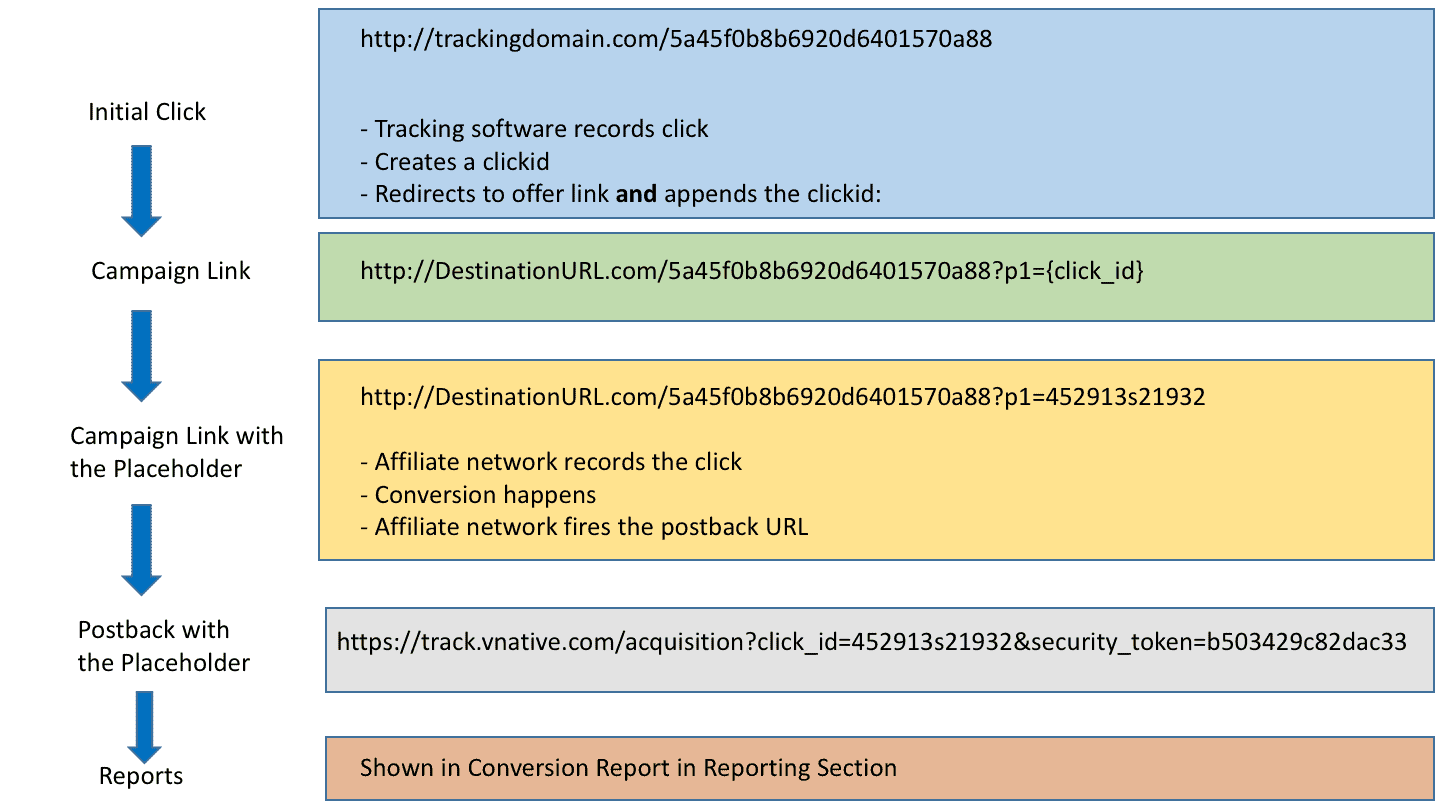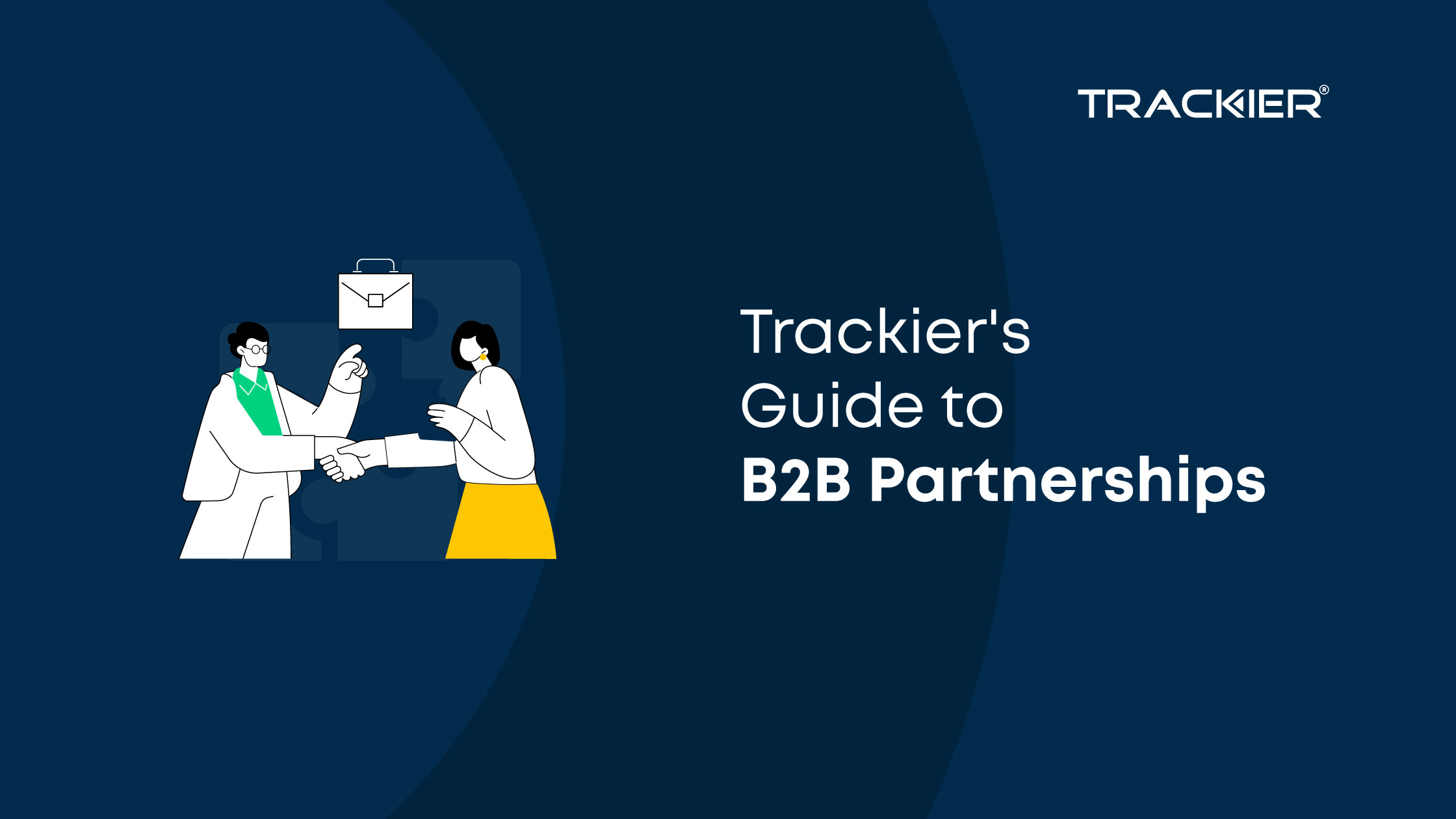What is Server-to-Server / Postback Tracking?
This tracking link is also known as cookie-less tracking or S2S conversion tracking or post back URL conversion. With this tracking URL, you can track conversions without the necessity to modify the thank you or confirmation page. In server to server / Postback tracking, there is no need to resort to last touch attribution because every time a user views your ads we generate a unique Click ID which we pass to you as a parameter. You will take care to pass this parameter back to us when the conversion happens and have the possibility to add a dynamic conversion value to the server to server operation if needed. How did Postback work? In this process, we have an advertiser server and Trackier server. Now when the visitor clicks on the offer’s link Trackier server creates a unique Id as Click Id for that visitor Stored into the server then after the conversion happens by the visitor then the advertiser server passes the Unique Id.

If both servers log the same transaction, the tracking software only counts the transaction once, since the server response postback is the same value.
Types of Identifiers
The Click Id generated on the server side can be the numbers of things. The Click Id can also be used with the several variables like username, email address, or the IP address logged at the time the transaction starts. For some types of affiliate transactions, using the affiliate ID may also work as the identifier to track the transaction.
Third Party Tracking
For affiliates who are tracking campaigns independently, it’s important to note that they must implement their own Postback URL. The roundtrip for 3rd party tracking starts with the affiliate appending a Click ID to the offer URL. When that offer URL is clicked, the affiliate click ID is logged. The tracking server then passes a unique click ID to the advertiser’s server, where the click ID is logged by the advertiser. When a conversion occurs, the advertiser posts back to the tracking software, which in turn posts back to the 3rd party tracking for the affiliate, completing the roundtrip. Using an iframe or image pixel for third-party tracking will not work if the advertiser is only using server-to-server tracking because the postback process will not cause the image pixel to fire on conversion.
Benefits of Server to server tracking:
Accuracy The most important benefit of using server-to-server tracking is accuracy. Unique Click ID’s provide greater accuracy because they are generated when a user clicks a tracking link. As a result, advertisers are able to track individual transactions back to specific affiliates. Security You get additional security in addition to accuracy because transactions can only be generated by using a click ID which is matched with a Lead ID. This further reduces affiliate fraud. Server-side tracking also prevents cookie-stuffing, a method of fraud used to stuff cookies into browsers in order to generate a commission for an affiliate when a purchase is made on a merchant’s website. Delayed Reporting Ideal for delayed reporting situations. Using a server-side post means that you can wait to post a conversion until after the refund time period passes, ensuring that you only pay for true conversions. Mobile Tracking Server-side tracking is the ideal method for tracking on mobile platforms because of a number of cookie placement limitations in-app download stores and default browsers like Apple’s mobile Safari which has cookies turned off by default. With Trackier you are having two options: Postback and Pixel tracking. Considering my clients, I experienced that due to the ease in saving pixel code, most of the advertiser works on Pixel tracking rather than postback tracking because it’s easy to save the pixel the rather than storing and passing the click ID. But once the postback tracking is set the accuracy and the security of the actions is superb.













